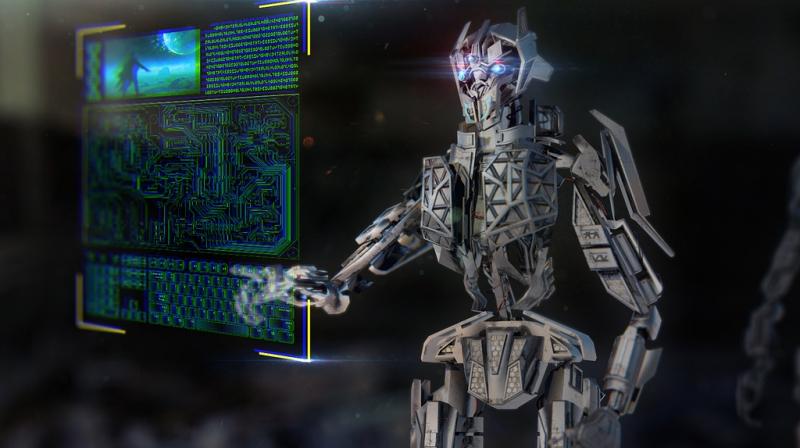Rise of the machines! A robot that can 'grow, retract, re-grow to different shape'
11 November, 2019

Robots are a common view these days in factories and other places. While they navigate pretty easily across open layouts, robots experience a bit of difficulty winding through narrow spaces to carry out tasks such as reaching for a product at the back of a cluttered shelf.
To solve this technologic complication, MIT engineers have developed a robot designed to extend a chain-like appendage flexible enough to twist and turn in any necessary configuration, yet rigid enough to support heavy loads or apply torque to assemble parts in tight spaces.
When the task is complete, the robot can retract the appendage and extend it again, at a different length and shape, to suit the next task.
The appendage design took inspiration from nature -- by the way plants grow, which involves the transport of nutrients, in a fluidized form, up to the plant's tip.
Likewise, the robot consists of a "growing point," or gearbox, that pulls a loose chain of interlocking blocks into the box. Gears in the box then lock the chain units together and feed the chain out, unit by unit, as a rigid appendage.
Researchers presented the plant-inspired "growing robot" at the IEEE International Conference on Intelligent Robots and Systems (IROS) in Macau.
They envision that grippers, cameras, and other sensors could be mounted onto the robot's gearbox, enabling it to meander through an aircraft's propulsion system and tighten a loose screw, or to reach into a shelf and grab a product without disturbing the organization of surrounding inventory, among other tasks.
"Think about changing the oil in your car. After you open the engine roof, you have to be flexible enough to make sharp turns, left and right, to get to the oil filter, and then you have to be strong enough to twist the oil filter cap to remove it," said Harry Asada, professor of mechanical engineering at MIT.
"Now we have a robot that can potentially accomplish such tasks. It can grow, retract, and grow again to a different shape, to adapt to its environment," said lead researcher Tongxi Yan, a former graduate student in Asada's lab.
The design of the new robot is an offshoot of Asada's work in addressing the "last one-foot problem" -- an engineering term referring to the last step, or foot, of a robot's task or exploratory mission.
"The realization of the robot is totally different from a real plant, but it exhibits the same kind of functionality, at a certain abstract level," Asada explained.
Researchers designed a gearbox to represent the robot's "growing tip," akin to the bud of a plant, where, as more nutrients flow up to the site, the tip feeds out more rigid stem.
Within the box, they fit a system of gears and motors, which works to pull up a fluidized material -- in this case, a bendy sequence of 3-D-printed plastic units interlocked with each other, similar to a bicycle chain.
As the chain is fed into the box, it turns around a winch, which feeds it through a second set of motors programmed to lock certain units in the chain to their neighbouring units, creating a rigid appendage as it is fed out of the box.
Researchers can program robot to lock certain units together while leaving others unlocked, to form specific shapes, or to "grow" in certain directions.
When the chain is locked and rigid, it is strong enough to support a heavy, one-pound weight.
Source:
TAG(s):
